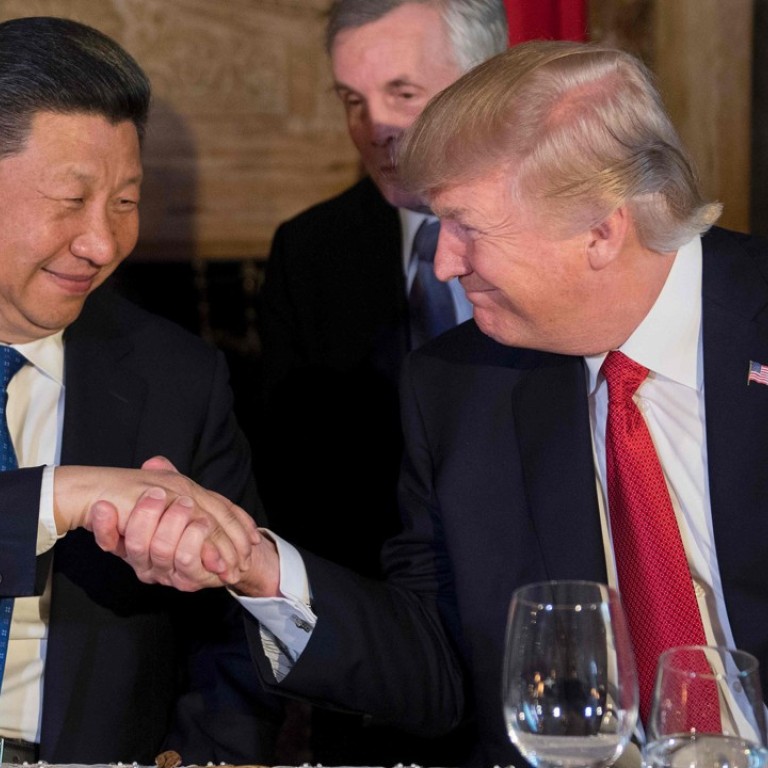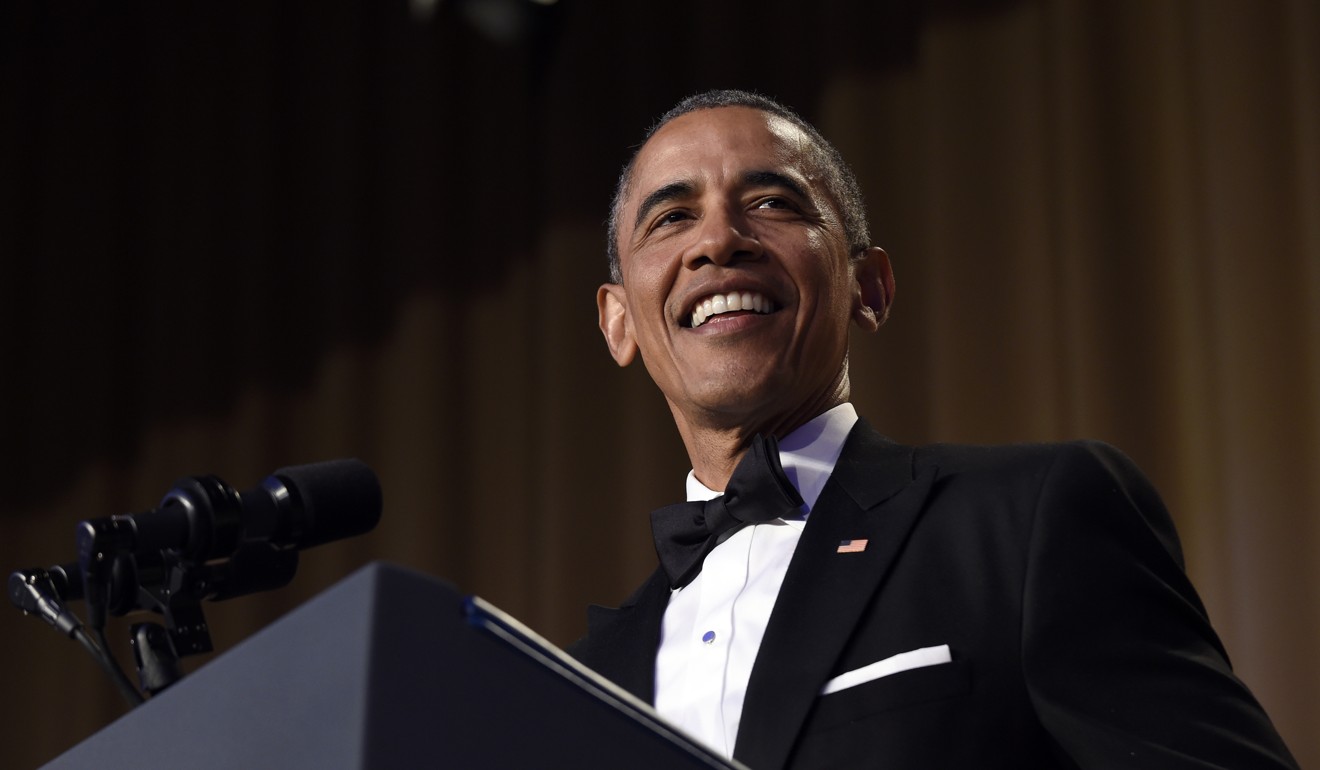
Opinion: The US will come to regret its petulant snub of China’s belt and road
The US’ failure to recognise the strategic importance of Beijing’s trade development plan will harm its companies and diplomatic standing
It is fashionable to blame all the world’s ills and idiocies on the erstwhile American Apprentice host, and some of that blame is well targeted. But Donald Trump has no monopoly on idiocy, and in one area in particular the comfortingly statesmanlike Barack Obama must take the blame: that is the United States’ failure to recognise the economic and strategic importance of Xi Jinping’s new Silk Road for China, and in parallel its refusal to sign up to the China-led Asian Infrastructure Investment Bank.

At least the American event enabled huge US infrastructure builders like Aecom, Fluor and Bechtel to keep busy and distracted while leaders in Beijing discussed Asia’s massive infrastructure-building needs – estimated by the Asian Development Bank at US$26 trillion between now and 2030.
And giants like General Electric, Caterpillar and Honeywell, which also stayed away from Beijing, are probably confident they can quickly catch up since all three are understood already to have won some lucrative belt and road contracts.
History will probably look back on the US’ petulant snub of both the belt and road and the AIIB as a key flexion point in the shift of global economic and diplomatic power
But history will probably look back on the US’ petulant snub of both the belt and road and the AIIB as a key flexion point in the shift of global economic and diplomatic power between the US and China. Probably nothing could anyway have prevented the gradual ascent of the meticulous and patient Beijing government away from two centuries of humiliation and squalour, but US petulance has probably accelerated the process and harmed America’s hard-earned reputation as a liberal and generous-spirited global hegemon.
Don’t get me wrong. At this stage, I believe China’s global trade scheme is much more hype than substance, but the US seems to have been flat-footedly oblivious to its massive diplomatic significance. As I wrote in July last year: “The fact that the [‘Belt and Road Initiative’] concept is likely to be empty of short-term significance from a strict trade and investment point of view does not in any way dilute its huge significance to Beijing leaders who view progress a century at a time.
“This is an attempt to provide a new prism with which to view the world economy and the global balance of power – not a prism hovering over the Atlantic, but one firmly over China, with the ‘Stans’, Europe and Africa to the West and the Pacific sea lanes going east. It is a concept wedded to global diplomacy, not global trade, but that makes it no less significant.”

But three things make the belt and road concept distinct. First, the inclusion of the vast and neglected region of “Stans” in Central Asia – from Pakistan and Afghanistan in the east to Uzbekistan and Turkmenistan abutting the Caspian Sea, and Azerbaijan and Georgia beyond, linking to Turkey and the convulsive Islamic nations around Iran and Iraq. Second, the clear priority given to infrastructure building. And third, attention wilfully turned away from the US.
Bringing the “Stans” into the world economy is a truly radical step. But from a trade and investment point of view, these countries will take decades to amount to anything from the vantage point of a private-sector business. Note that the “Stans” between them account for 12 per cent of the belt and road’s population but just 1.7 per cent of its GDP – with almost half of this accounted for by Kazakhstan’s oil and gas. They have neither people nor the markets worth a dime. But I believe China’s embrace of the “Stans” has little to do with trade or business. Above all else, it is aimed at trying to stabilise a region that is dangerously vulnerable to some very ugly Islamic radicalism, which Beijing very much does not wish to see infecting its eastern Islamic provinces.
The priority being given to infrastructure building is also radically important – not just because of the urgent region-wide need for more investment in infrastructure, but because it reflects a fundamentally new attitude to how the wealthy world helps the world’s impoverished economies. Listen even briefly to AIIB chief Jin Liqun and you hear harsh words about the failings of the West’s “bleeding heart” aid strategies that have prevailed for the past half-century. Jin is clear: developing economies need infrastructure, not aid, if they are to lift themselves out of poverty.
The best test case for this philosophy at present is Pakistan, which has pedalled slowly and painfully backwards despite receiving billions in Western aid since I lived there, beyond Peshawar, close to the Khyber Pass, almost half a century ago. But now, with US$55 billion of Chinese investment already committed to 21 power plants, thousands of miles of roads, development of Gwadar port close to the Horn of Africa and numerous special economic zones, Pakistan may at last begin to lift itself out of the mire.
It is not yet too late for the US to reverse Obama’s diplomatic misjudgment. A welcome mat remains in place if it decides to join either the new Silk Road or the AIIB as they begin to gain importance in the coming years.
But I sense our American Apprentice host may not be the man willing to knock on the door. On the contrary, if his over-hasty withdrawal from the 12-economy Trans-Pacific Partnership is any guide, he seems inclined to repeat Obama’s mistakes rather than learn from them. If the “TPP 11” economies, meeting this weekend in Hanoi alongside the meeting of trade ministers of the Asia-Pacific Economic Cooperation, can salvage a deal despite US withdrawal, he will be left to repent at leisure. American companies – and America’s diplomatic standing in Asia – will be the victims.
David Dodwell researches and writes about global, regional and Hong Kong challenges from a Hong Kong point of view

